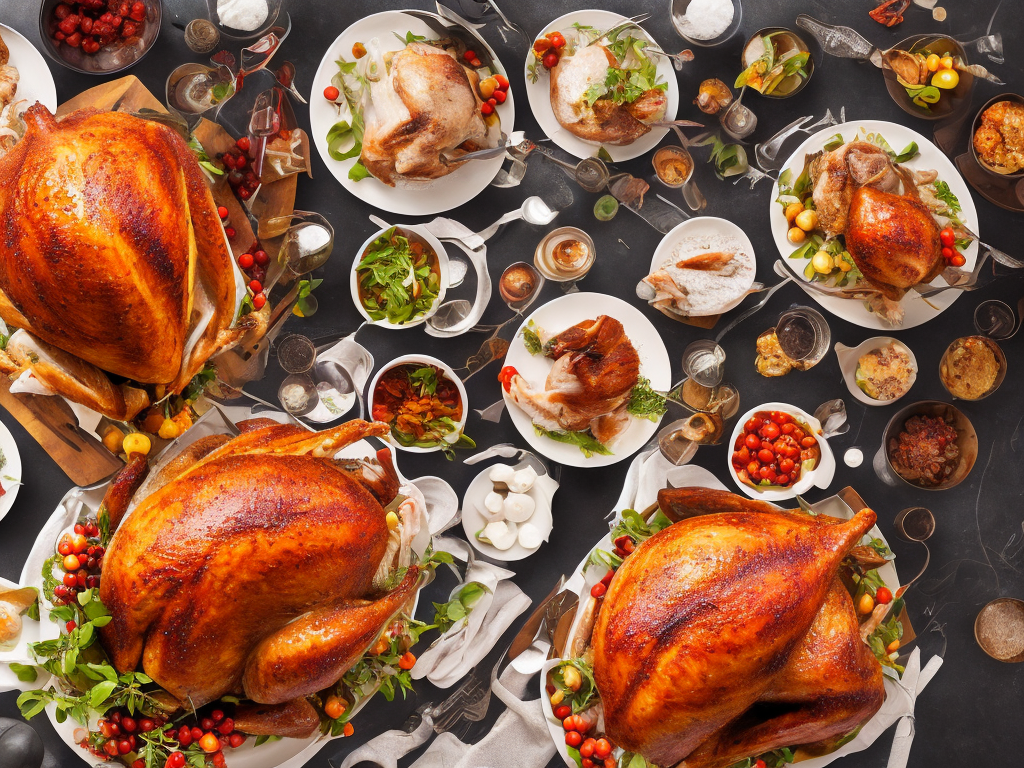
How To Cook A Turkey: A Step-by-Step Guide to a Perfect Holiday Feast
As the holiday season approaches, many home cooks find themselves faced with the daunting task of preparing a delicious turkey for their family and friends. Cooking a turkey can be intimidating, but with the right knowledge and techniques, it can be a rewarding and enjoyable experience. In this article, we will outline the step-by-step process of cooking a turkey to perfection.
1. Choosing the Right Turkey:
Before diving into the cooking process, it is crucial to select the right turkey. Ensure that the turkey is fresh, properly sized, and not freezer-burned. Allow approximately 1.5 pounds of turkey per person, which should give you enough meat for a traditional meal with leftovers. Thawing a frozen turkey usually takes a few days in the refrigerator, so plan accordingly.
2. Preparing the Bird:
Start by removing the turkey from its packaging, and rinse it thoroughly inside and out under cold water. Pat dry with paper towels. Take note of the turkey's weight, as this will determine the cooking time. Next, tuck the wings underneath the body to prevent them from burning during cooking. Some cooks also find it helpful to truss the turkey using kitchen twine to ensure even cooking.
3. Seasoning:
Once the turkey is prepped, it's time to add some flavor. Liberally season both the inside and the outside of the turkey with salt and pepper. You can also add any additional herbs and spices that you like for more complexity. Popular choices include rosemary, thyme, sage, garlic powder, and paprika. You can also rub the turkey with softened butter for a golden and crispy skin.
4. Stuffing Options:
Stuffing the turkey is a traditional method that imparts flavor to the meat from the inside out. However, it is important to note that stuffing the turkey can lengthen the cooking time, and if not done properly, can pose a food safety risk. Ensure that the stuffing reaches an internal temperature of at least 165°F to kill any bacteria. Alternatively, consider cooking the stuffing separately for convenience and safety.
5. Roasting the Turkey:
To achieve a moist and evenly cooked turkey, roasting is the most common method. Preheat your oven to 325°F and place the turkey on a rack in a roasting pan. For additional flavor and moisture, you can add a cup or two of chicken or turkey stock to the bottom of the pan. Cover the turkey loosely with foil to prevent the skin from getting too dark in the beginning, and remove the foil during the last hour of cooking for a crispy skin. Baste the turkey every 30 minutes with the drippings in the pan for added succulence.
6. Monitoring the Internal Temperature:
Properly cooking a turkey involves monitoring its internal temperature. Insert a meat thermometer into the thickest part of the turkey's thigh, without touching the bone. The turkey is fully cooked when it reaches an internal temperature of 165°F. However, to ensure tenderness and juiciness, some cooks prefer to remove the turkey from the oven when the thermometer reads 155°F and let it rest tented in foil for 20-30 minutes. The residual heat will continue cooking the turkey, bringing it to the target temperature while allowing the juices to redistribute.
7. Carving and Serving:
Once the turkey has rested, it's time to carve and enjoy your hard work. Start by cutting the twine, if used, and remove any stuffing from the cavity. Carefully carve the turkey using a sharp knife. Begin by cutting through the skin between the breast and the thigh, then continue by slicing the breast meat and separating the leg and thigh portions. Serve with your favorite sides and garnish with fresh herbs for an appealing presentation.
8. Leftover Tips:
Leftover turkey can be just as enjoyable as the main meal itself. Turkey sandwiches, pot pies, and soups are just a few delectable options. To preserve the quality, store the leftover turkey in airtight containers in the refrigerator for up to three to four days. Freezing is also an option, with a shelf life of two to three months. It is advisable to cut the turkey into smaller portions to ensure quicker and more even reheating.
Cooking a turkey may seem like an overwhelming task, but with proper planning and technique, it can be an enjoyable experience that results in a tasty and satisfying holiday feast. Remember to choose the right turkey, season it well, cook it to the recommended internal temperature, and carve it with care. By following these steps, you'll be well on your way to serving a perfect turkey that will impress your family and be the centerpiece of your holiday celebration.
 Self-Instruct
Self-Instruct